Vegetation
Vegetation refers to the plant life that covers a particular area, including the types of plants, their distribution, and abundance. It is an essential component of ecosystems and plays a crucial role in supporting various forms of life on Earth.
Types of Vegetation
There are several types of vegetation, each adapted to different environmental conditions:
- Forest: Dense and diverse, forests are home to a wide variety of trees, shrubs, and other plants.
- Grassland: Characterized by grasses and other non-woody plants, grasslands are found in both tropical and temperate regions.
- Desert: Vegetation in deserts is sparse and consists of plants adapted to arid conditions, such as cacti and succulents.
- Tundra: Found in cold, high-latitude regions, tundra vegetation is made up of low-growing plants, mosses, and lichens.
- Aquatic: Vegetation that grows in water, including seaweeds, marsh plants, and other aquatic species.
Importance of Vegetation
Vegetation provides a wide range of benefits to the environment and human society, including:
- Oxygen Production: Through the process of photosynthesis, plants release oxygen into the atmosphere, which is essential for all aerobic life forms.
- Carbon Sequestration: Plants help mitigate climate change by absorbing carbon dioxide from the atmosphere and storing it in their tissues.
- Habitat and Biodiversity: Vegetation provides habitats for diverse animal species and supports biodiversity.
- Soil Erosion Control: Plant roots help anchor soil, preventing erosion and maintaining soil stability.
- Food and Resources: Many plants provide food, medicine, and raw materials for human use.
Studying Vegetation
To study vegetation, scientists use various methods, including:
- Field Surveys: Scientists observe and document the types and distribution of plants in a particular area.
- Remote Sensing: Technologies such as satellite imagery and aerial photography are used to monitor changes in vegetation cover over large areas.
- Vegetation Sampling: Sampling techniques, such as quadrat sampling, are used to estimate the abundance and diversity of plant species in an area.
- Vegetation Analysis: Scientists analyze vegetation data to understand ecological patterns, species interactions, and the effects of environmental changes on plant communities.
Understanding vegetation is essential for managing natural resources, conserving biodiversity, and mitigating the impacts of climate change.
.◂Science Worksheets and Study Guides Sixth Grade. Solids, liquids and gases
Study Guide Solids, liquids and gases
Solids, liquids and gases  Activity Lesson
Activity Lesson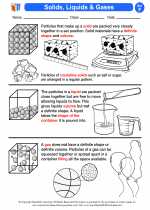 Solids, Liquids & Gases
Solids, Liquids & Gases  Worksheet/Answer key
Worksheet/Answer key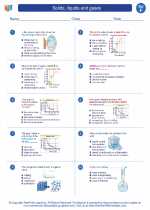 Solids, liquids and gases
Solids, liquids and gases  Worksheet/Answer key
Worksheet/Answer key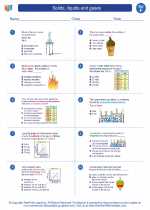 Solids, liquids and gases
Solids, liquids and gases  Worksheet/Answer key
Worksheet/Answer key Solids, liquids and gases
Solids, liquids and gases  Vocabulary/Answer key
Vocabulary/Answer key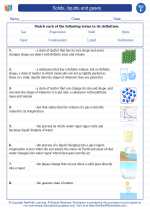 Solids, liquids and gases
Solids, liquids and gases  Vocabulary/Answer key
Vocabulary/Answer key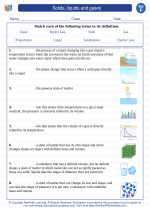 Solids, liquids and gases
Solids, liquids and gases 

 Activity Lesson
Activity Lesson
 Worksheet/Answer key
Worksheet/Answer key
 Worksheet/Answer key
Worksheet/Answer key
 Worksheet/Answer key
Worksheet/Answer key
 Vocabulary/Answer key
Vocabulary/Answer key
 Vocabulary/Answer key
Vocabulary/Answer key

The resources above cover the following skills:
PHYSICAL SCIENCE
Energy
Students who demonstrate understanding can:
Plan an investigation to determine the relationships among the energy transferred, the type of matter, the mass, and the change in the average kinetic energy of the particles as measured by the temperature of the sample.